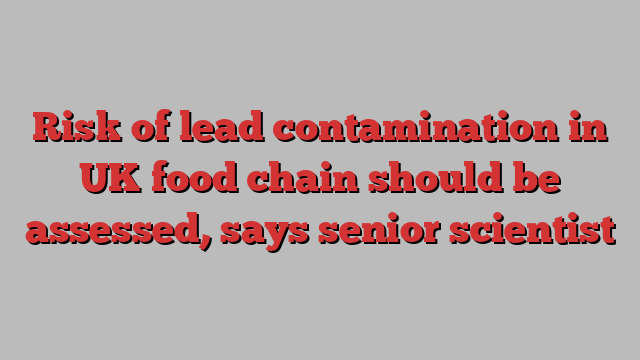
Unlock the Editor’s Digest for free
Roula Khalaf, Editor of the FT, selects her favourite stories in this weekly newsletter.
Ministers should assess the scale of lead contamination throughout the UK food chain “from farm to plate”, according to a senior toxicologist.
Over 8,500 abandoned mines disperse toxic metals into the environment each year. These can accumulate in waterways and soil before being consumed by animals or seeping into agricultural systems.
Alan Boobis, emeritus professor of toxicology at Imperial College London, said “there is a potential problem from lead exposure, the scale of which is currently unclear”, after the issue was highlighted by a Financial Times investigation.
“It seems that what is needed is an objective risk assessment of the entire food chain from farm to plate across the country,” he added.
Consumed by humans, lead has a devastating impact on almost every organ in the body, with any level of exposure capable of having a harmful effect, according to the World Health Organization.
Experts have warned that the risks posed by metal contamination to human health are as serious as sewage and microplastics yet the issue has received comparatively little public and government attention.
Every year, the UK’s Veterinary Medicines Directorate tests 400-450 samples of meat, milk, fish and honey for the presence of lead and other heavy metals. But many scientists say that testing such a small number of food items offers an insufficient assessment.
As well as expanding food testing, environmental and health experts have called on the government to increase monitoring of Britons who live near abandoned lead mines for the presence of the toxic metal.
Unlike countries such as the US and Canada, the UK does not conduct national programmes that monitor sources of environmental exposure to lead and levels in the population.
Professor Bruce Lanphear, health sciences expert at Simon Fraser University in Vancouver, said he believed that people living near abandoned mines in the UK should be tested to assess their potential exposure.
“I was in the UK last year and I found it troubling that so little was known,” Lanphear said. “The politicians don’t know and the public don’t know what the full picture is.”
Boobis is chair of the Committee on Toxicity of Chemicals in Food, Consumer Products and the Environment, an independent group that advises the Food Standards Agency and Department of Health.
He said he “agreed with the conclusion” of the FT investigation published last month which found the scale of lead toxicity present in farm animals reared for human consumption was unknown.
“It is tempting to call for widespread and extensive monitoring, but this has to be funded and will, therefore, need to compete with other demands on the public purse,” he added.
Government officials say food cannot be kept completely free of lead. Instead, the aim is to reduce concentrations to as low as is reasonably achievable.
In 2010, the European Food Safety Authority, which provides independent scientific advice on food risks, expressed “potential concern over possible neurodevelopmental effects in young children” as a consequence of lead exposure.
The European Commission called on member states, then including the UK, to gather evidence on lead intoxication in farm animals.
A subsequent UK study of 112 farm animals reared on land in areas with high lead levels in the soil, found that samples of livers and kidneys in sheep were “mostly above” the maximum lead level threshold, as were kidneys from cattle.
Researchers have said UK authorities should be concerned that people living in these areas are producing their own food from contaminated land.
However, government officials said national screening programmes are introduced based on the recommendations of the UK National Screening Committee (UK NSC).
Each year, it runs an open call for proposals to consider new screening programmes where fresh evidence can be submitted which makes the case for new or modified screening.